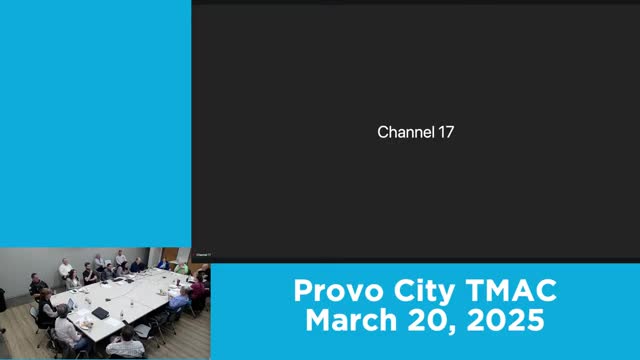Parks and Recreation urges micro-mobility planning for Provo trails; master plan proposed
March 23, 2025 | Provo City Other, Provo, Utah County, Utah
This article was created by AI summarizing key points discussed. AI makes mistakes, so for full details and context, please refer to the video of the full meeting. Please report any errors so we can fix them. Report an error »

Parks and Recreation staff told the Transportation Mobility Advisory Committee that micro‑mobility on the city’s recreational and transportation trails — particularly the Provo River Trail — is creating speed and user‑conflict concerns and that the department plans a trail master-planning effort to address those issues.
A parks staff speaker (identified in the meeting as James) said the proposed master plan will focus on recreational trails, natural‑surface networks and improved connections between recreational and transportation corridors. The plan’s scope will include consideration of whether and where to separate faster micro‑mobility users from pedestrians, solicit consultant advice on feasible design options, and create education and signage to reduce conflicts.
Key points from the discussion:
- Enforcement and education: Staff and committee members reported that simply posting a numeric speed limit is difficult to enforce and often unhelpful because many micro‑mobility devices lack speedometers. Members suggested a coordinated education campaign, signage harmonized across jurisdictions, and targeted enforcement where needed. Parks staff said the department is already increasing signage and social‑media outreach and will work with police to refine enforcement strategies.
- Design responses: Proposals discussed include widened trail sections, directional separation (striping), pilot projects to test separated lanes, underpass and undercrossing improvements, and physical measures where necessary to prevent illegal motorized use on recreational trails.
- Interagency coordination: Parks staff noted many trail systems cross federal, county and municipal land; the department will coordinate with the U.S. Forest Service and other partners where rules and allowed uses differ across jurisdictions.
Committee members recommended collaboration with local advocacy groups (for example, bike‑and‑walk organizations) to run education events and trail‑etiquette outreach during bike‑to‑school and bike‑to‑work weeks.
Parks staff said they plan to identify funds for a consultant‑led master plan and to pursue design and pilot measures as the planning progresses. No formal TMAC action was taken; the briefing was a request for feedback and coordination between Parks and Public Works.
A parks staff speaker (identified in the meeting as James) said the proposed master plan will focus on recreational trails, natural‑surface networks and improved connections between recreational and transportation corridors. The plan’s scope will include consideration of whether and where to separate faster micro‑mobility users from pedestrians, solicit consultant advice on feasible design options, and create education and signage to reduce conflicts.
Key points from the discussion:
- Enforcement and education: Staff and committee members reported that simply posting a numeric speed limit is difficult to enforce and often unhelpful because many micro‑mobility devices lack speedometers. Members suggested a coordinated education campaign, signage harmonized across jurisdictions, and targeted enforcement where needed. Parks staff said the department is already increasing signage and social‑media outreach and will work with police to refine enforcement strategies.
- Design responses: Proposals discussed include widened trail sections, directional separation (striping), pilot projects to test separated lanes, underpass and undercrossing improvements, and physical measures where necessary to prevent illegal motorized use on recreational trails.
- Interagency coordination: Parks staff noted many trail systems cross federal, county and municipal land; the department will coordinate with the U.S. Forest Service and other partners where rules and allowed uses differ across jurisdictions.
Committee members recommended collaboration with local advocacy groups (for example, bike‑and‑walk organizations) to run education events and trail‑etiquette outreach during bike‑to‑school and bike‑to‑work weeks.
Parks staff said they plan to identify funds for a consultant‑led master plan and to pursue design and pilot measures as the planning progresses. No formal TMAC action was taken; the briefing was a request for feedback and coordination between Parks and Public Works.
View full meeting
This article is based on a recent meeting—watch the full video and explore the complete transcript for deeper insights into the discussion.
View full meeting

